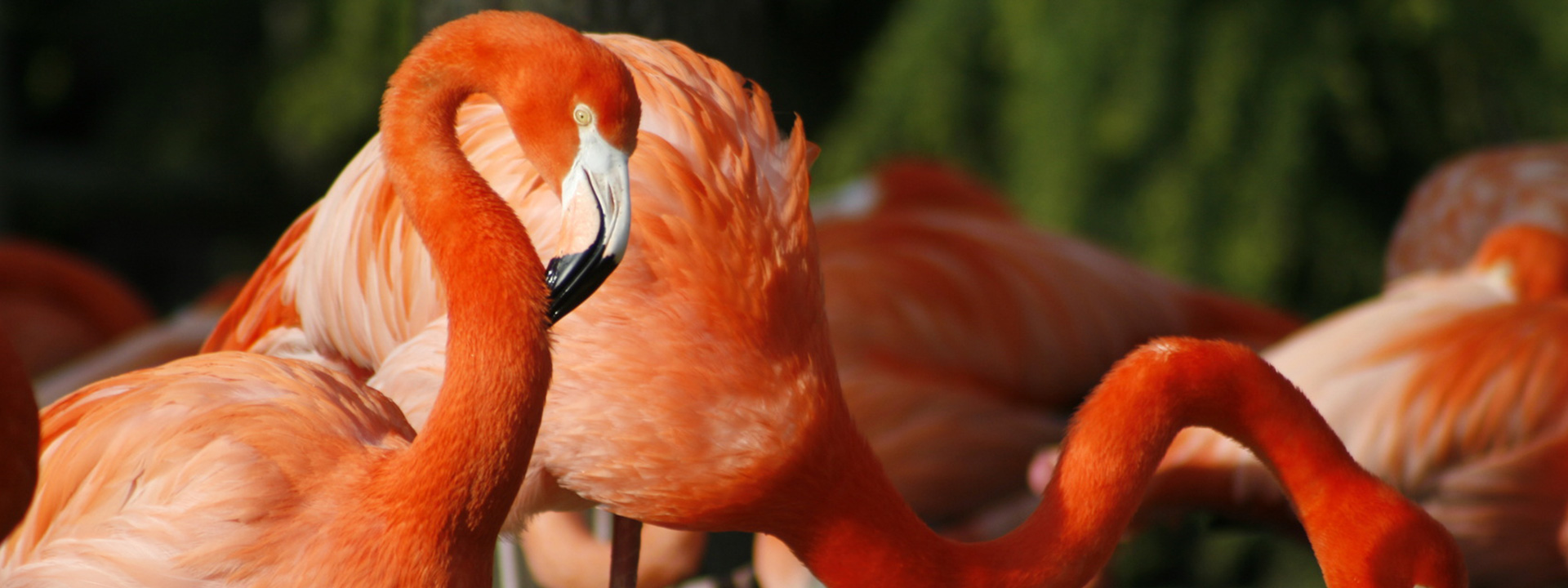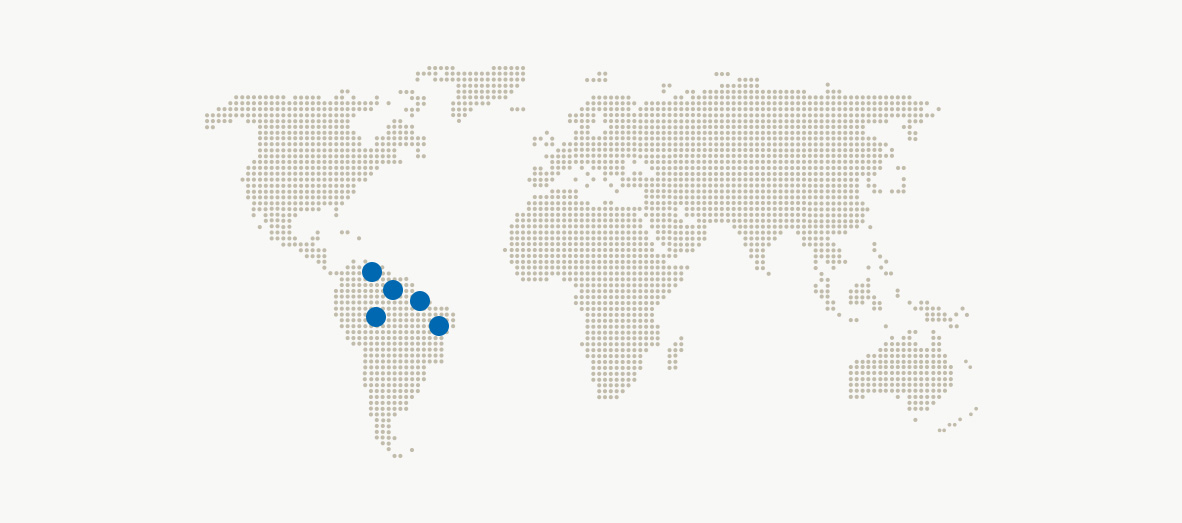In Mundomar inhabits a large colony of flamingos Phoenicopterus ruber species, commonly known as Caribbean Flamingos. It is a bird of the family of flamingos (Phoenicopteridae) living in tropical areas of America, including the Caribbean, the Yucatan Peninsula, northern Venezuela and Colombia and the Galapagos Islands.

Flamingos
Phoenicopterus
Species
Phoenicopterus
Order
Phoenicopteriformes
Family
Phoenicopteridae
Danger of Extinction
Amenazada (vulnerable)

Features
They can be seen in shallow lakes and coastal waters. They specialize in feeding on large lakes with saline or alkaline concentrations. They get their food from the muddy bottom sediments. These waters contain enough food to satisfy a large number of these birds that eat insects, shrimp and small plants, diatoms and other algae.
Customs, food and habitat:
The female lays a single egg between May and August, with off-white as chalk. Both female and male incubate the egg for a period of 28 to 32 days until they hatch; also both parents care for the young until sexual maturation may take 6 years. The young are born with red plumage as adults, but a few days this becomes grayish plumage. The expected longevity of flamenco is 40 years, a longer in the birds.
Curiosities
The Caribbean flamingo wading in shallow water, lowered its long neck and above the water through its beak upturned feeds; peak within different small animals are collected from a thin plates (lamellae) lamellae arranged like a comb, between which passes the water. Suitable lakes are few and far between, and the birds must travel great distances from one feeding place to another, often in large flocks.

